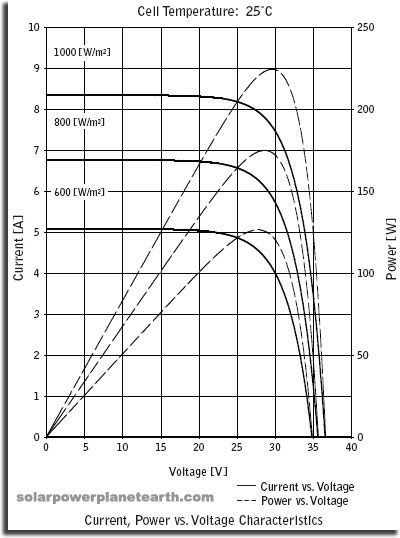The battery is charging fast (probably too fast for its long-term health, but this is an experimental setup), and now is taking about 100 W less from the CC.
sensij this is not quite the plot you were looking for showing the CC operating in absorb stage, but it's getting there. You can see how the CC slides down the IV curve more toward Voc to take less power than is available from the PV array (which is now in full sun, as with the previous plot).
Capture.PNG
Another interesting little tidbit: Notice how Voc has moved down slightly (green vs. dashed pink plot). It's warming up fast outside, heading for a 95 degree day here, and the panels are heating up even faster now that they're in full sun.
sensij this is not quite the plot you were looking for showing the CC operating in absorb stage, but it's getting there. You can see how the CC slides down the IV curve more toward Voc to take less power than is available from the PV array (which is now in full sun, as with the previous plot).
Capture.PNG
Another interesting little tidbit: Notice how Voc has moved down slightly (green vs. dashed pink plot). It's warming up fast outside, heading for a 95 degree day here, and the panels are heating up even faster now that they're in full sun.

Comment